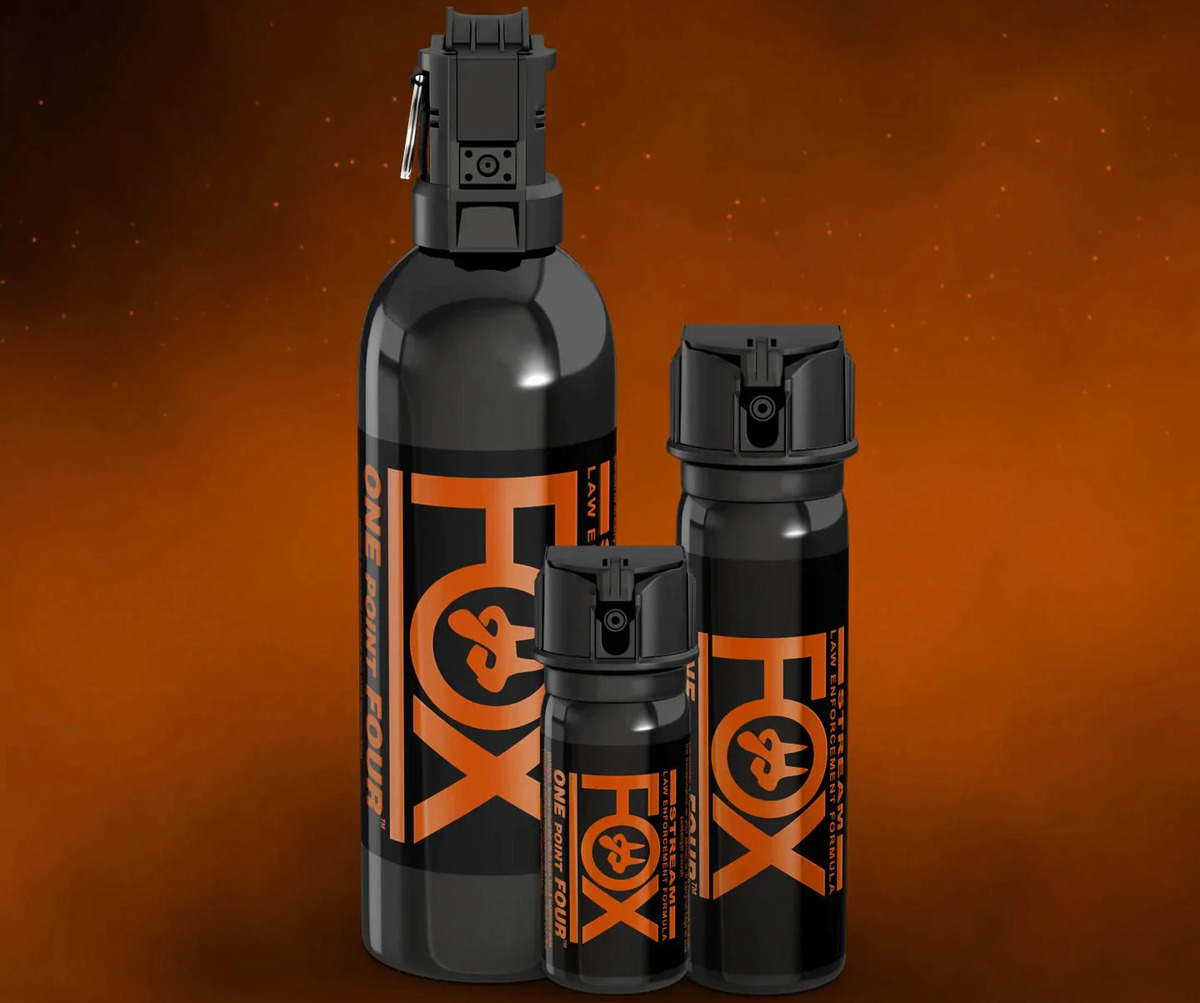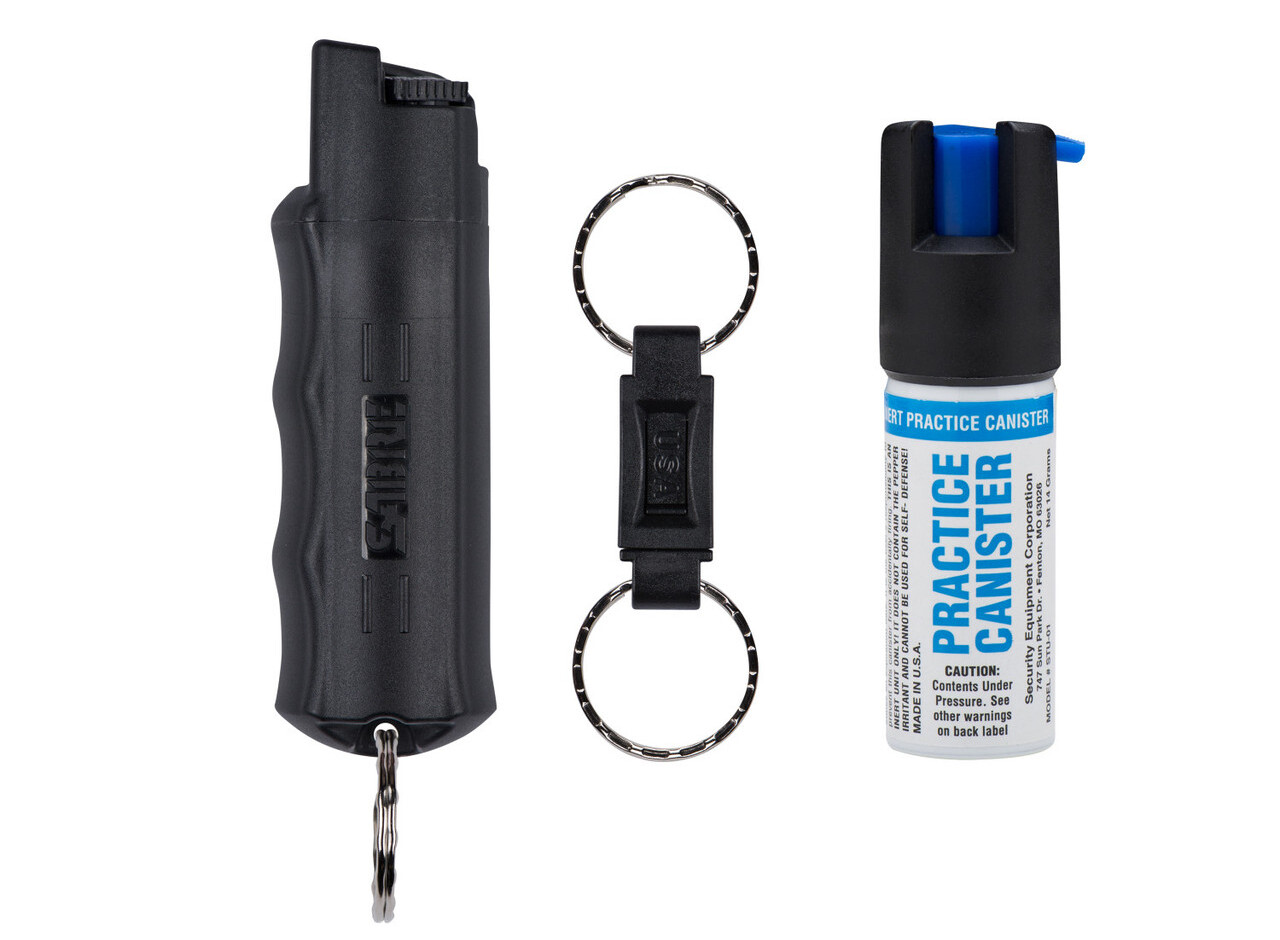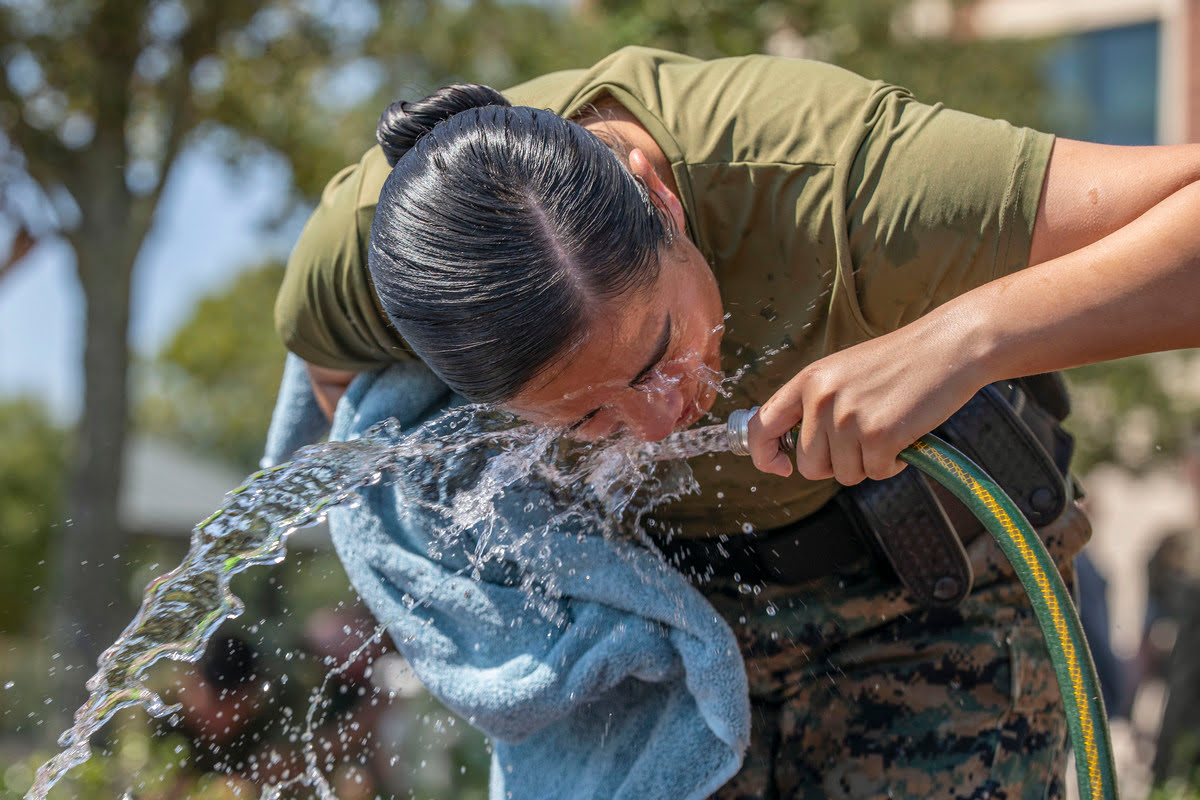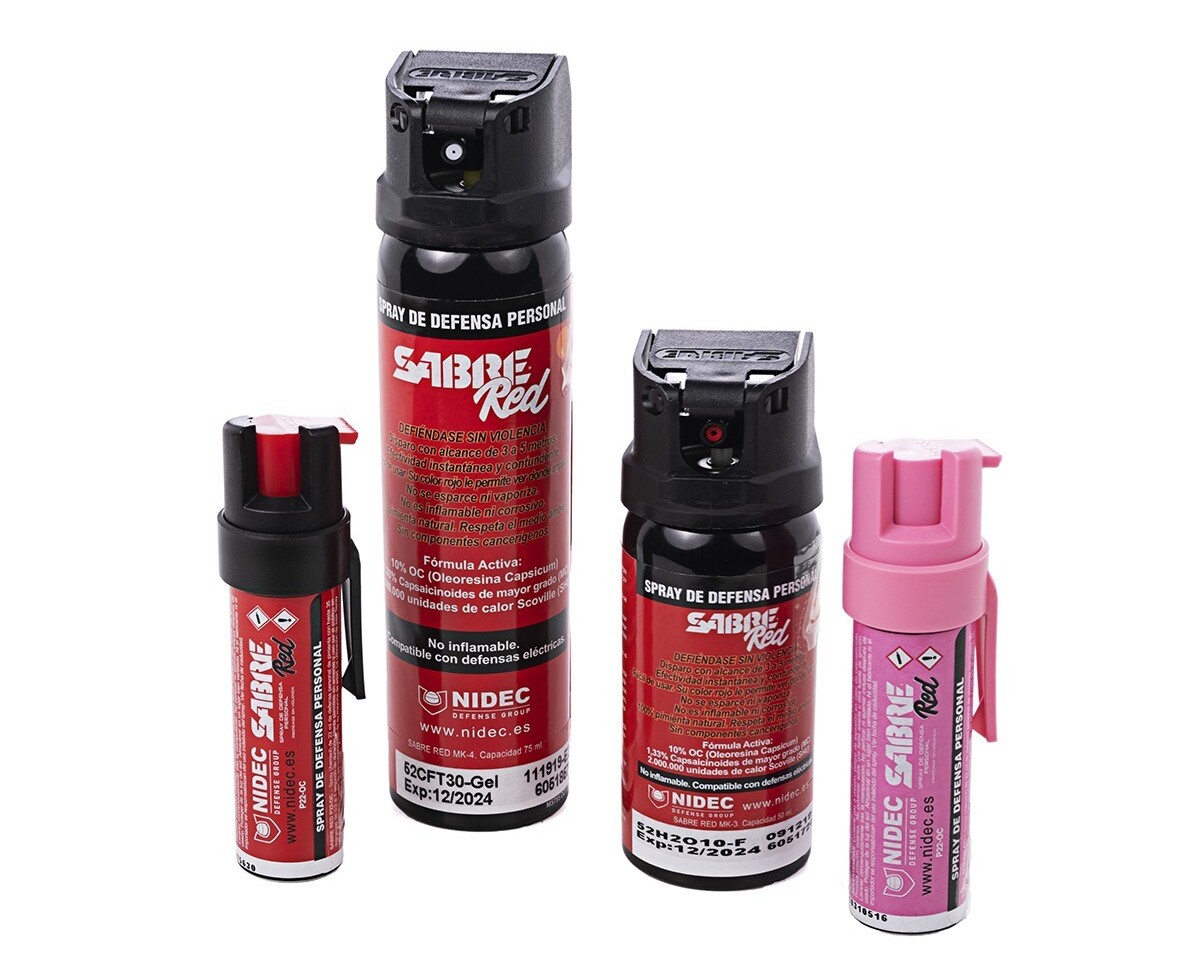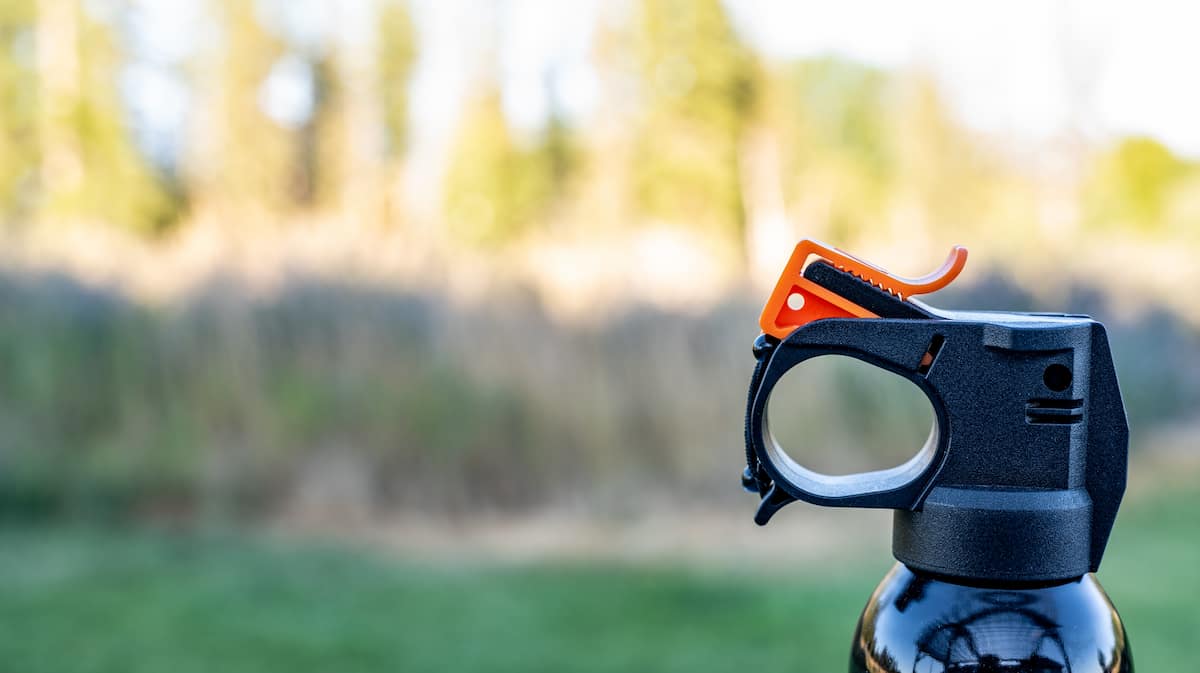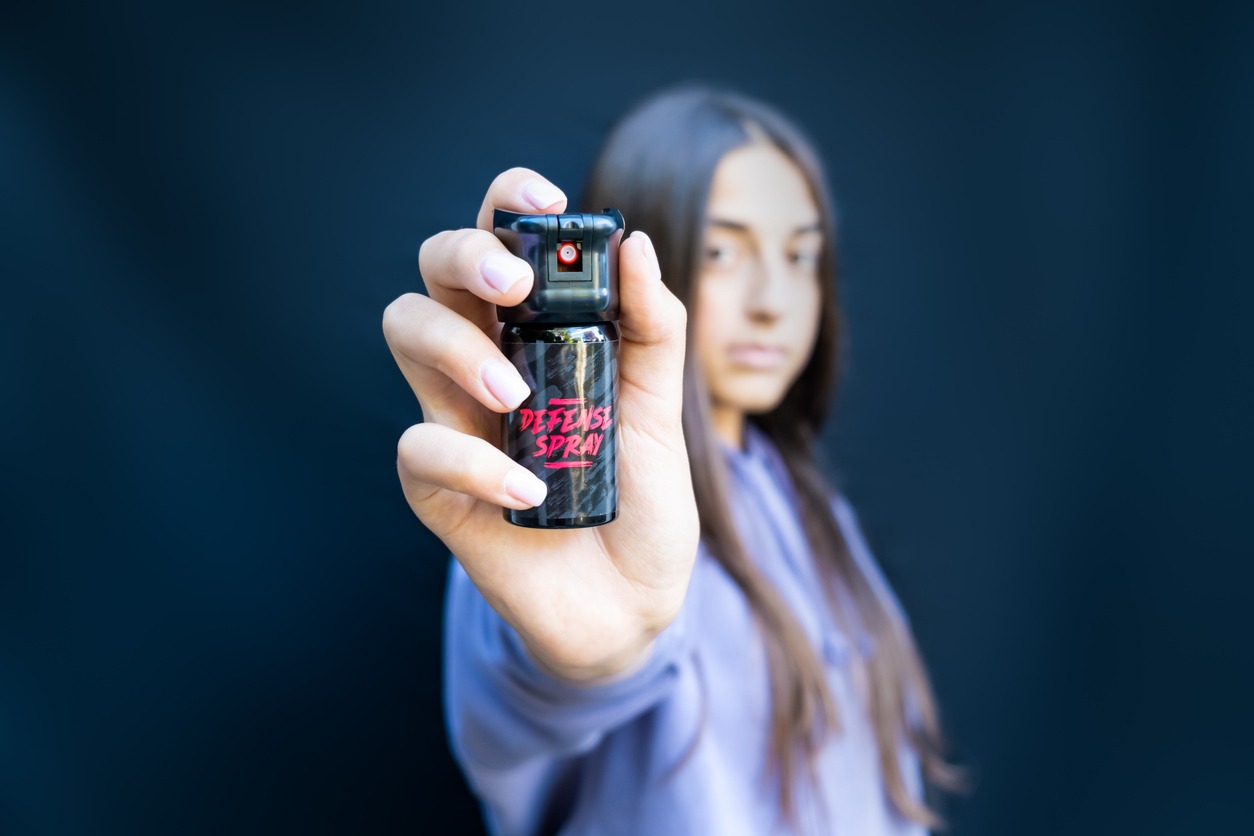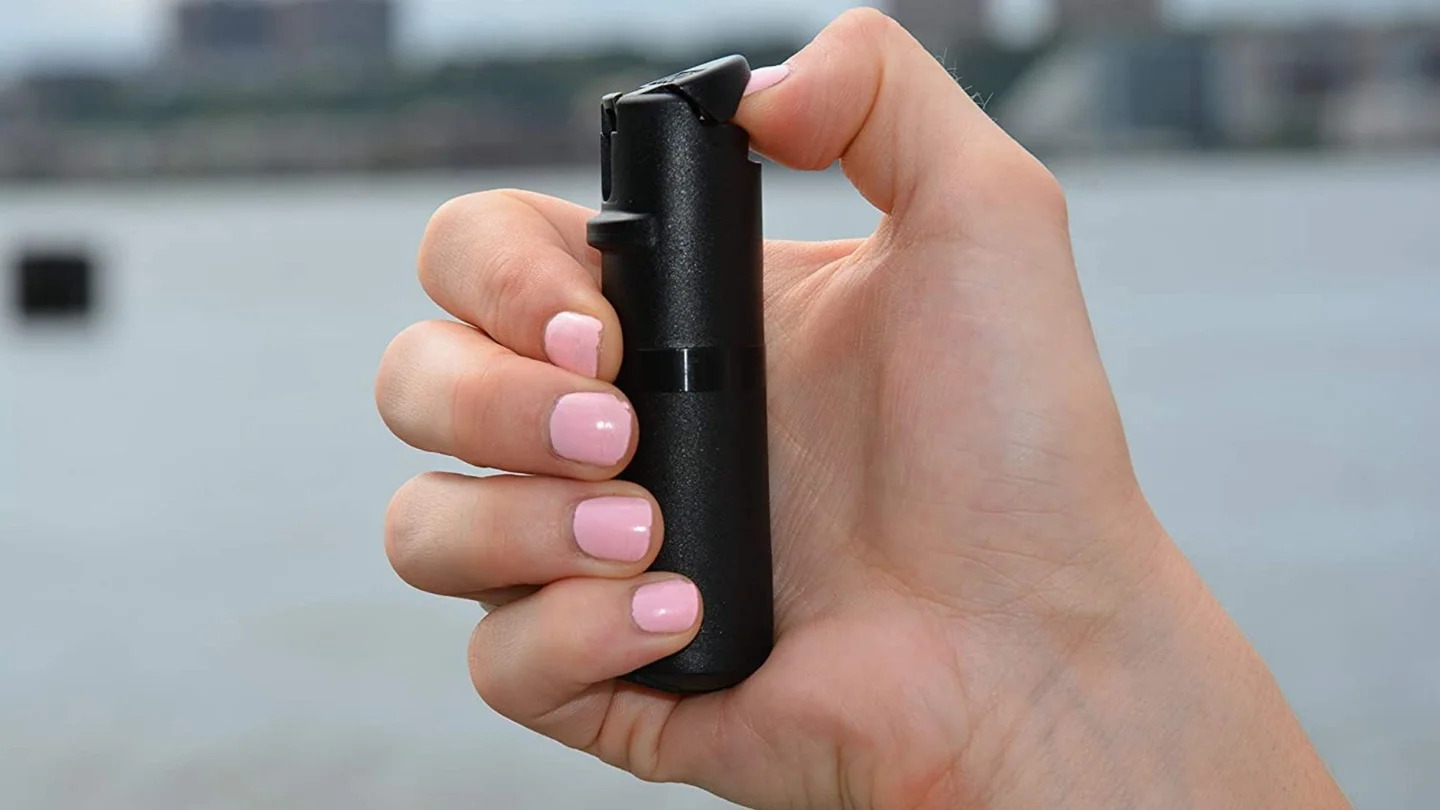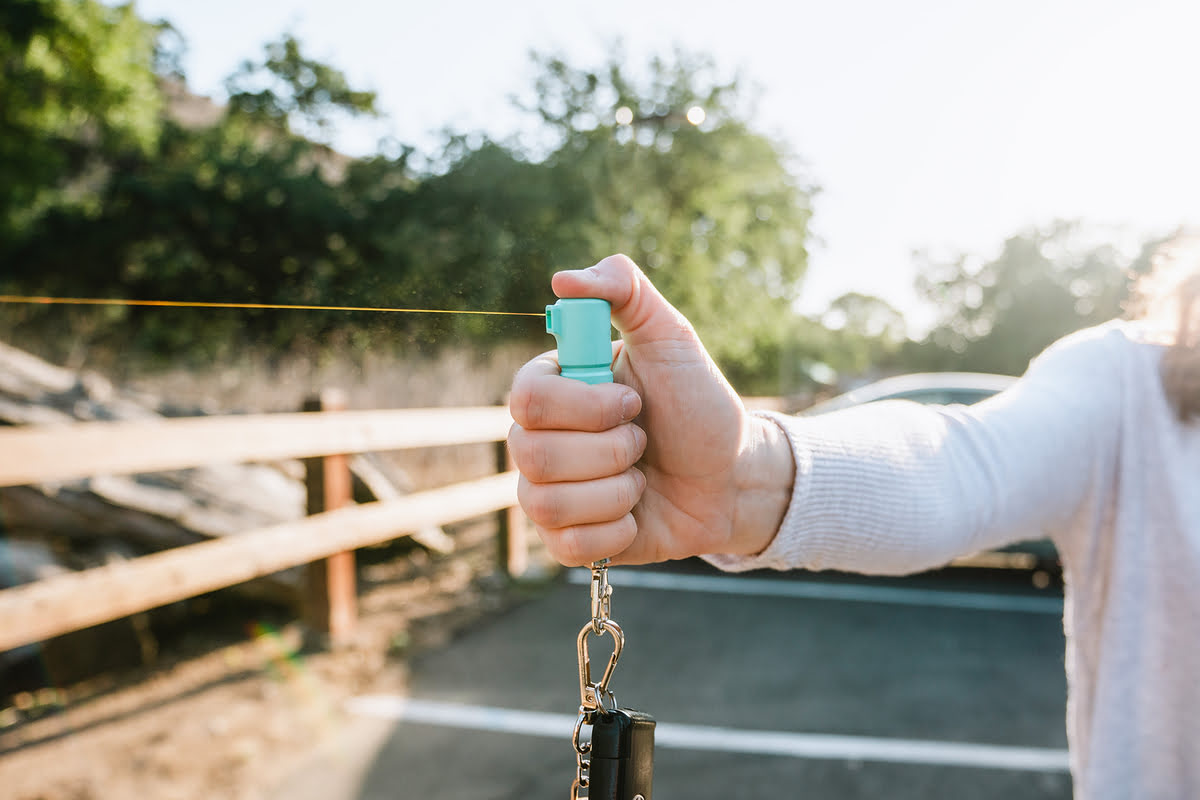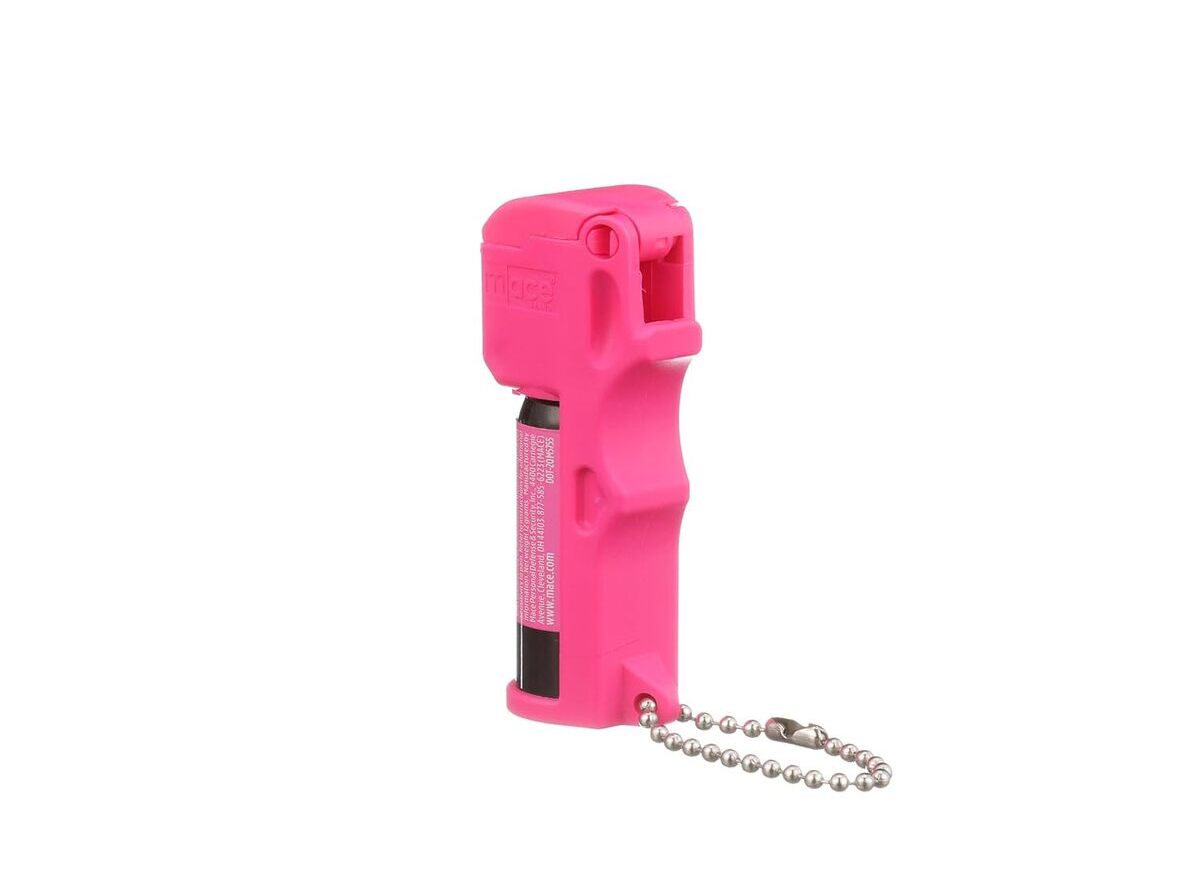Home>Home Security and Surveillance>What Pepper Spray Do Police Use
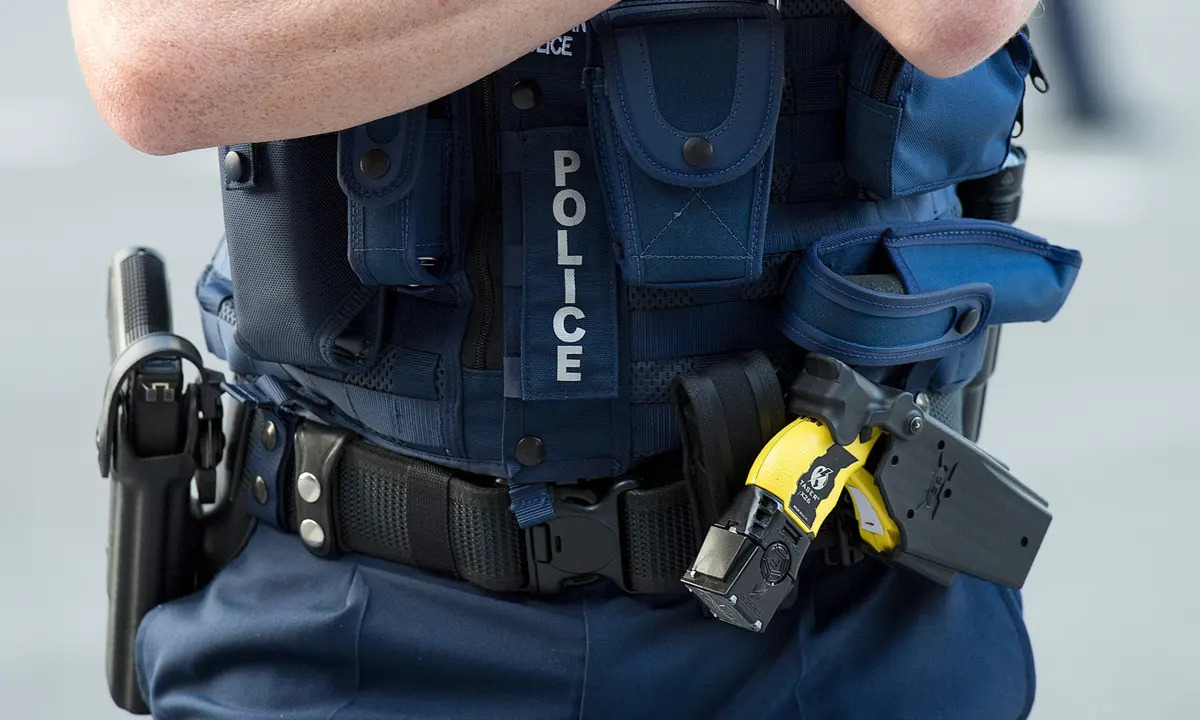

Home Security and Surveillance
What Pepper Spray Do Police Use
Modified: March 6, 2024
Discover the top pepper spray options utilized by law enforcement. Enhance your home security and surveillance with the same effective defense measures.
(Many of the links in this article redirect to a specific reviewed product. Your purchase of these products through affiliate links helps to generate commission for Storables.com, at no extra cost. Learn more)
Introduction
Pepper spray, also known as oleoresin capsicum (OC) spray, is a powerful non-lethal self-defense tool widely used by police officers and law enforcement agencies across the world. It is a chemical compound derived from the oils found in hot peppers, and when used correctly, it can temporarily incapacitate an individual by causing intense irritation to the eyes, respiratory system, and skin.
The use of pepper spray by police has become increasingly prevalent in recent years as a means to maintain control and ensure the safety of both officers and the public in various situations. This article will delve into the history of pepper spray, discuss its importance for police officers, explore the types and specifications of pepper spray used by law enforcement, examine its effectiveness and controversies, and touch upon the training and legal aspects associated with its use.
Understanding the role and significance of pepper spray in the realm of law enforcement is crucial for comprehending its value as a tool for maintaining public safety. By navigating through the complexities and nuances of pepper spray usage, we gain insight into its use as an effective non-lethal option in policing.
Key Takeaways:
- Pepper spray is a crucial non-lethal tool for police, offering a safe way to subdue suspects without causing permanent harm. Its history, effectiveness, and controversies highlight the need for responsible use and continuous evaluation.
- Police officers receive specialized training and adhere to legal regulations when using pepper spray. This ensures its proper and ethical deployment, promoting public safety while respecting individual rights.
Read more: What To Do For Pepper Spray In Eyes
History of Pepper Spray
The use of pepper spray as a self-defense tool dates back hundreds of years. Its origins can be traced to ancient civilizations such as China and India, where the fiery oils of peppers were used to create deterrents for potential attackers. In the 1980s, the concept of using pepper derivatives as a non-lethal weapon gained traction in law enforcement.
One of the pioneering figures in the development of modern pepper spray is Kamran Loghman, an Iranian-American chemist. In collaboration with the Federal Bureau of Investigation (FBI), Loghman refined the formula of pepper spray to make it more suitable for police use. This led to the introduction of the first commercially available pepper spray product in the United States in the late 1980s.
Pepper spray quickly gained recognition as an effective tool for police officers to use during altercations or encounters with potentially dangerous individuals. Its non-lethal nature offered a less lethal alternative to firearms, reducing the risk of permanent injury or death in situations where force was necessary but lethal force was not warranted.
Over the years, advances in technology and chemical formulations have improved the potency and effectiveness of pepper spray. It is now available in various forms, including aerosol sprays, foam, and gel, each with its own unique properties and delivery mechanisms. The development of these different formulations has allowed law enforcement agencies to cater to specific situations and individual officer preferences.
Today, pepper spray is widely used by police in countries around the world. Its effectiveness and reputation as a reliable tool for subduing suspects with minimal risk has contributed to its widespread adoption in law enforcement practices.
While pepper spray has a long history, its journey from being a traditional self-defense tool to a mainstream option for law enforcement highlights the continuous evolution and innovation in the field of non-lethal force. This evolution ensures that police officers have access to effective tools that strike a balance between the need for force and the preservation of life.
Importance of Pepper Spray for Police
Pepper spray plays a vital role in the arsenal of non-lethal force options available to police officers. Its importance lies in its ability to provide a safe and effective means of subduing individuals, reducing the risk of physical harm to both officers and suspects. Here are some key reasons why pepper spray is considered an essential tool for law enforcement:
- Non-lethality: Pepper spray offers law enforcement officers a non-lethal alternative to firearms. It provides a way to incapacitate an individual without causing permanent injury or loss of life. This is especially important when dealing with suspects who are unarmed or pose a low level of immediate threat.
- Range and Versatility: Pepper spray allows officers to maintain distance from potential threats. It can be used effectively within a range of several feet, allowing officers to neutralize a suspect without engaging in close physical contact. Moreover, pepper spray can be used in various environments, both indoors and outdoors, making it a versatile option for law enforcement.
- Deterrence: The mere presence of pepper spray can serve as a powerful deterrent, discouraging potential aggressors from engaging in illegal or violent activities. Knowing that law enforcement officers are equipped with pepper spray can help de-escalate situations and discourage individuals from resisting arrest or escalating violence.
- Rapid Effects: Pepper spray acts quickly, causing intense irritation to the eyes, respiratory system, and skin of the target. This rapid onset of effects can disorient and incapacitate the suspect, allowing officers to gain control of the situation and minimize the risk of injury to themselves and others.
- Reduced Risk of Injury: By utilizing pepper spray, officers can minimize the likelihood of potential physical injuries associated with physical altercations. This is particularly important when dealing with suspects who may be under the influence of drugs or alcohol and may have heightened strength or resistance to pain.
Overall, the importance of pepper spray for police lies in its effectiveness as a non-lethal force option. It provides a means to incapacitate suspects without resorting to deadly force, thereby promoting the safety and well-being of both officers and the public. By utilizing pepper spray, law enforcement agencies can ensure that their officers have a balanced and effective approach to maintaining public order.
Types of Pepper Spray Used by Police
Police officers have a range of pepper spray options available to them, each designed to suit different situations and individual preferences. The types of pepper sprays commonly used by law enforcement include:
- Aerosol Spray: Aerosol spray is the most common type of pepper spray used by police. It comes in a canister with a pressurized valve and a nozzle that allows for the spraying of a fine mist. This type of spray provides an effective range of several feet, making it suitable for use in various scenarios.
- Foam: Foam pepper spray is a specialized variant that is particularly useful in outdoor environments or situations where there is a risk of blowback. The foam formulation helps minimize the chances of the spray being affected by wind, ensuring that it reaches the intended target accurately.
- Gel: Pepper gel is another popular variant used by police. It is a thick, sticky substance that adheres to the target’s face upon contact, minimizing the risk of cross-contamination or blowback. The gel formulation also reduces the chance of the spray dispersing and affecting unintended individuals in crowded or indoor situations, making it a preferred choice for law enforcement.
- Cone Spray: Cone spray, also known as fogger spray, is designed to emit a wide cone-shaped spray pattern. This type of spray disperses over a larger area, making it suitable for crowd control or situations where there are multiple suspects in close proximity. Cone spray helps officers create a barrier, discouraging suspects from advancing or encroaching on their position.
- Keychain or Pocket Size: Keychain or pocket-sized pepper spray is a compact and convenient option for police officers to carry at all times. These smaller canisters can easily be attached to a keychain or stored in a pocket, ensuring that officers have quick access to a readily deployable self-defense tool whenever needed.
While these are the main types of pepper spray used by police, it’s important to note that different law enforcement agencies may have specific guidelines on the type of pepper spray their officers are equipped with, taking into consideration the unique needs and conditions of their jurisdiction.
Ultimately, the selection of the appropriate type of pepper spray depends on factors such as the situation at hand, the environment, and the specific requirements of the law enforcement agency. The availability of different types of pepper sprays ensures that officers have options to effectively and safely respond in a variety of scenarios.
Specifications of Police Pepper Spray
Police pepper sprays are specifically designed to meet the needs of law enforcement personnel. They are formulated to deliver maximum effectiveness while ensuring the safety of both officers and suspects. Here are some common specifications and features of police pepper spray:
- Capscium Content: Police pepper sprays typically contain a high concentration of capsaicin, the active ingredient in peppers that causes the potent burning sensation. The capsaicin content is measured in Scoville Heat Units (SHU), with higher SHU values indicating a more potent formulation.
- Range: Police pepper sprays are designed to have an effective spray range of several feet, allowing officers to maintain a safe distance from the target. The range may vary depending on the specific type of pepper spray used, with aerosol sprays typically having a range of 10-15 feet.
- Delivery Mechanism: Police pepper sprays are usually equipped with a reliable and user-friendly delivery mechanism. This ensures that officers can quickly and accurately deploy the spray when needed, even in high-stress situations. Common delivery mechanisms include finger-grip canisters, thumb-wheel canisters, and twist-top canisters.
- Formulation: The formulation of police pepper sprays is carefully balanced to provide maximum effectiveness while minimizing the risk of permanent injury. The sprays are designed to cause intense irritation to the eyes, respiratory system, and skin, incapacitating the suspect temporarily without causing long-term harm.
- Safety Features: Police pepper sprays often incorporate safety features to prevent accidental discharge. These features may include safety locks, tamper-proof seals, or trigger mechanisms that require deliberate activation to ensure that the spray is deployed only when intended.
- Canister Size: Police pepper sprays are available in various sizes, including larger canisters for extended use and smaller, more compact options for easy carrying. The size of the canister can affect factors such as the number of shots available before refilling and the level of portability for officers.
- Training and Certification: Many law enforcement agencies require officers to undergo training and certification in the proper use of pepper spray. This ensures that officers understand the capabilities and limitations of the spray, and can use it effectively and responsibly in the field.
It’s important to note that specific specifications and features of police pepper sprays may vary depending on the manufacturer, region, and law enforcement agency. Regular testing and evaluation are conducted to ensure the quality, potency, and reliability of these sprays for use in law enforcement operations.
By adhering to these specifications, police pepper sprays are able to provide officers with a reliable and effective tool to subdue suspects while minimizing the risk of permanent injury or loss of life.
The pepper spray commonly used by police is called Oleoresin Capsicum (OC) spray. It is a non-lethal weapon that causes irritation and inflammation of the eyes, nose, and throat, incapacitating the target temporarily.
Read more: What To Do When Sprayed With Pepper Spray
Effectiveness and Controversies Surrounding Police Pepper Spray
Police pepper spray has proven to be an effective tool for law enforcement in various situations. Its ability to temporarily incapacitate suspects without causing permanent harm has made it a valuable non-lethal force option. However, its use has not been without controversy. Let’s explore the effectiveness of police pepper spray and the controversies surrounding its use:
Effectiveness: When used correctly, police pepper spray can be highly effective in subduing suspects. The intense burning sensation it induces in the eyes, respiratory system, and skin can cause immediate pain, disorientation, and temporary incapacitation. This allows officers to gain control of a situation, reducing the risk of physical altercations and facilitating the apprehension of suspects.
The effectiveness of pepper spray is supported by numerous real-life law enforcement scenarios where its deployment has been successful in neutralizing threats without resorting to lethal force. Its ability to incapacitate individuals quickly and effectively has arguably saved lives and reduced the severity of injuries in confrontations.
Controversies: Despite its effectiveness, police pepper spray has faced criticism and controversies. One key concern is the potential for misuse or overuse by law enforcement officers. Instances of excessive or improper use of pepper spray have raised questions about the ethics and accountability of its deployment.
Controversies have surrounded the use of pepper spray during protests or demonstrations. Its use on peaceful protestors has sparked debates about the use of force and the potential infringement of free speech rights. Critics argue that indiscriminate or excessive use of pepper spray can lead to unnecessary harm and erode trust between law enforcement and communities.
Another controversy involves the potential for adverse health effects, especially for individuals with pre-existing medical conditions. There have been cases where the use of pepper spray has resulted in serious injuries, such as respiratory distress or allergic reactions. Critics highlight the need for ongoing research and training to ensure that officers are aware of potential risks and can make informed decisions regarding its use.
It is important to note that while controversies surrounding police pepper spray exist, its use remains a subject of debate and careful examination. Law enforcement agencies strive to strike a balance between the need for non-lethal force options and the responsibility to safeguard the well-being and rights of individuals.
Ultimately, the effectiveness and controversies surrounding police pepper spray require ongoing evaluation, training, and adherence to guidelines and best practices. By addressing concerns and continuously refining its use, law enforcement agencies can ensure that pepper spray remains a valuable tool in their efforts to maintain public safety while upholding principles of accountability and respect for individual rights.
Training and Guidelines for Police Officers Using Pepper Spray
Proper training and adherence to guidelines are paramount when it comes to police officers using pepper spray. Law enforcement agencies recognize the need to ensure that officers are equipped with the knowledge and skills to deploy pepper spray effectively and responsibly. Here is an overview of the training and guidelines implemented for police officers using pepper spray:
Training Programs: Law enforcement agencies provide comprehensive training programs to educate officers on the safe and effective use of pepper spray. These programs typically cover topics such as the physiological effects of pepper spray, proper deployment techniques, situational awareness, and de-escalation strategies. The training also emphasizes the importance of using pepper spray as a last resort when other non-lethal force options have proven ineffective.
Legal Considerations: Police officers are trained on the legal aspects of using pepper spray. They learn about the circumstances in which the use of force, including pepper spray, is justified, as well as the potential consequences of misuse. Officers are educated on their duty to act within the boundaries of the law and to consider the principles of proportionality and necessity when deciding to use pepper spray.
Safety Protocols: Police training emphasizes the importance of officer safety and the safety of others when deploying pepper spray. Officers learn to assess the situation to minimize the risk of cross-contamination and blowback. They are taught to consider factors such as wind direction, potential bystanders, and the availability of alternative options before deploying pepper spray. Training also covers proper decontamination procedures, should officers or others be inadvertently exposed to the spray.
Continuing Education: Training on the use of pepper spray is an ongoing process. Law enforcement agencies ensure that officers receive regular refresher courses to stay updated on evolving best practices and any changes in guidelines or legal requirements. Continuous education helps officers maintain proficiency in handling and deploying pepper spray and promotes a culture of responsible use in the field.
Documentation and Reporting: Law enforcement agencies have protocols in place to record and report incidents involving the use of pepper spray. Officers are trained on the importance of accurately documenting the circumstances leading up to the deployment, the reasons for using pepper spray, and the outcomes. This documentation helps ensure accountability and allows for review and analysis of incidents for training and policy improvement purposes.
By providing comprehensive training programs and clear guidelines, law enforcement agencies strive to equip their officers with the necessary skills and knowledge to use pepper spray effectively and responsibly. Training emphasizes the importance of evaluating each situation individually and considering alternatives before resorting to the use of force. This approach helps reduce the risk of misuse and fosters a culture of accountability and professionalism within law enforcement.
Legal Aspects and Regulations Regarding Police Use of Pepper Spray
The use of pepper spray by police officers is subject to various legal aspects and regulations designed to ensure its appropriate and responsible use. These regulations are in place to protect both officers and the public, and to uphold principles of justice and human rights. Here are key legal aspects and regulations surrounding police use of pepper spray:
Use of Force Continuum: Many law enforcement agencies follow a use-of-force continuum that outlines the appropriate levels of force that can be used in response to different levels of resistance or threat. Pepper spray often falls within the range of intermediate force options, intended to be used when verbal commands and physical control techniques have failed or are inadequate to control a situation.
Proportionality and Necessity: The legal use of pepper spray is guided by the principles of proportionality and necessity. Officers are required to assess the level of threat faced and use pepper spray only when it is proportionate and necessary to the circumstances. In other words, the use of pepper spray should be a reasonable response to an immediate threat or to prevent imminent harm to themselves or others.
Constitutional Considerations: The use of pepper spray by police officers must adhere to constitutional standards. This includes compliance with the Fourth Amendment protection against unreasonable searches and seizures. Officers must have a justifiable reason, such as reasonable suspicion or probable cause, to use pepper spray in a given situation. Excessive or unwarranted use of pepper spray can potentially violate an individual’s constitutional rights.
Restrictions and Prohibitions: There may be specific restrictions or prohibitions on the use of pepper spray in certain contexts or locations. For example, its use may be limited or prohibited in confined spaces, near flammable materials, or in certain areas where its deployment could pose a significant risk to public safety. Law enforcement agencies must be aware of and comply with any such restrictions that apply to their jurisdiction.
Accountability and Reporting: Law enforcement agencies require officers to accurately document and report incidents involving the use of pepper spray. Officers must provide a clear rationale for its use, including details about the situation, the perceived threat, and the outcomes. This documentation ensures transparency and allows for internal review and external oversight of the use of force incidents.
Training and Certification: Proper training and certification are essential for police officers authorized to use pepper spray. Officers must demonstrate competency and knowledge of the legal and tactical aspects of using pepper spray. Regular training updates and recertification processes ensure that officers remain familiar with the legal standards and techniques for appropriate deployment.
It is crucial for law enforcement agencies to stay updated with the ever-evolving legal landscape surrounding the use of force, including pepper spray. Compliance with legal aspects and regulations is vital to ensure public trust, uphold human rights, and minimize any potential abuse of power.
By adhering to legal frameworks and promoting transparency and accountability in the use of pepper spray, law enforcement agencies can maintain public safety while respecting the rights of individuals and fostering trust between the police and the communities they serve.
Conclusion
Pepper spray has become an integral tool in the arsenal of law enforcement personnel worldwide. Its non-lethal nature, range, and effectiveness make it a valuable asset for police officers in various situations. By temporarily incapacitating suspects without causing permanent harm, pepper spray offers a safer alternative to lethal force and helps maintain public order.
The history of pepper spray showcases the evolution and refinement of its formulation, making it a reliable tool for police officers. Its widespread use, alongside proper training and adherence to guidelines, ensures that officers are equipped with the skills to use pepper spray effectively and responsibly. By following legal aspects and regulations, law enforcement agencies strive to balance the need for force with the protection of human rights.
While pepper spray has proven to be an effective tool, controversies surrounding its use emphasize the importance of continuous evaluation, training, and accountability. Ensuring that officers are educated on its proper deployment, understanding the potential risks and limitations, and continuously refining its use will help build trust between law enforcement and the community.
As with any use of force option, the responsible use of pepper spray requires officers to assess the situation, consider alternatives, and apply appropriate force levels. Training programs, safety protocols, and adherence to use of force continuums contribute to informed decision-making and minimize the risk of misuse or excessive use.
Pepper spray serves as a crucial tool to enhance officer safety while reducing the risk of permanent injury or loss of life. By implementing proper training, adhering to guidelines, and considering legal aspects and regulations, law enforcement agencies can ensure that pepper spray is utilized effectively, ethically, and responsibly.
As the landscape of law enforcement continues to evolve, it is essential to continually evaluate and improve the use of pepper spray. Striking a balance between the need for non-lethal force options and the respect for individual rights and safety is paramount. Through ongoing education, training, and dialogue, law enforcement can enhance its practices and maintain the public’s trust, promoting a safer and more just society for all.
Frequently Asked Questions about What Pepper Spray Do Police Use
Was this page helpful?
At Storables.com, we guarantee accurate and reliable information. Our content, validated by Expert Board Contributors, is crafted following stringent Editorial Policies. We're committed to providing you with well-researched, expert-backed insights for all your informational needs.




